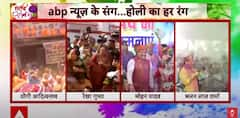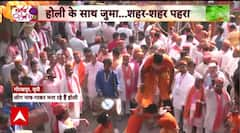Assam: Community Fishing Marks Bhogali Bihu Celebrations In Villages
On the 14th January, people traditionally hold community fishing events using the Assamese fishing net locally known as Jakoi.

The Magh Bihu or Bhogali Bihu festival marks the end of the harvesting season in Assam. It is quintessentially the festival of feasting. The three-day-long festival starts with fetching the food in a primitive century-old tradition through community fishing in the cold-soaked morning in mid-January. On the 14th January, people traditionally hold community fishing events using the Assamese fishing net locally known as Jakoi. A picturesque view can be witnessed across Assam near various wetlands-as revelers braving cold in the morning soaked in knee-deep water gets into the mood of the festival by fishing. Community fishing is a unique feature in Assam. Here, fishing is done in groups of hundreds of people.

“This tradition is prevalent from the days when the Tiwa kings used to rule this place. During Magh Bihu, both the king and the villagers used to get engaged in community fishing. Now, people from far-flung places, whether hills or plains, gather here on the Uruka morning and participate in the event,” Deben Baruah of Dimoria village in Assam’s Morigaon district told ABP Live.
“While fishing, all the village folk sing ‘Lali Lang’, a traditional song of the Tiwa tribe which symbolizes brotherhood. The community fishing is a historic event for us and it also spreads a sense of camaraderie among us all. Someone gets a good catch while someone returns empty-handed but nobody has regrets at the end of the day,” Baruah added.

“Every year, we come here on the day of Uruka for community fishing. We don’t sell our catch but have it during the Uruka feasting at night. It's all about merry-making. People irrespective of caste and creed participate. Someone gets a bigger catch like ‘bowal’ fish while someone small like ‘puthi-kholihona’. Still all return home happy,” said Sanjay Das, a resident of Morigaon.
Then the festival starts with feasting called 'Uruka', as communities cook and eat together to celebrate the harvest they have reaped. A highlight of the festivities is the painstakingly created 'bhelaghars' (hay and bamboo structures) depicting various themes ranging from human-elephant conflict, historical monuments, and social issues, among others.
It is in and around these ‘bhelaghars' that the community feasts are held and the next day, those are set ablaze along with 'Mejis' (cylindrical structures), also made of hay and bamboo, on the day of ‘Bhogali Bihu’, as a ritual to appease the fire god.

Bhogali’ refers to ‘feasting’ in Assamese and it is dedicated to Lord Agni, the Hindu fire god. The culture of Assam is agrarian and the main livelihood is dependent on agriculture. Due to this, the festival assumes importance in the Assamese calendar. The festival celebrates the end of the harvesting season in the region. The Magh Bihu celebrations commence on the last day of the month of ‘pooh’ in the Assamese calendar.
The word Bihu has been taken from the Sanskrit word Bishu meaning “to seek for peace”. Magh Bihu is also known as Maghar Domahi. The bhog served in the festival is of great importance and is a symbol of eating with the community.
The author is a senior journalist covering Northeast.
Trending News
Top Headlines











































